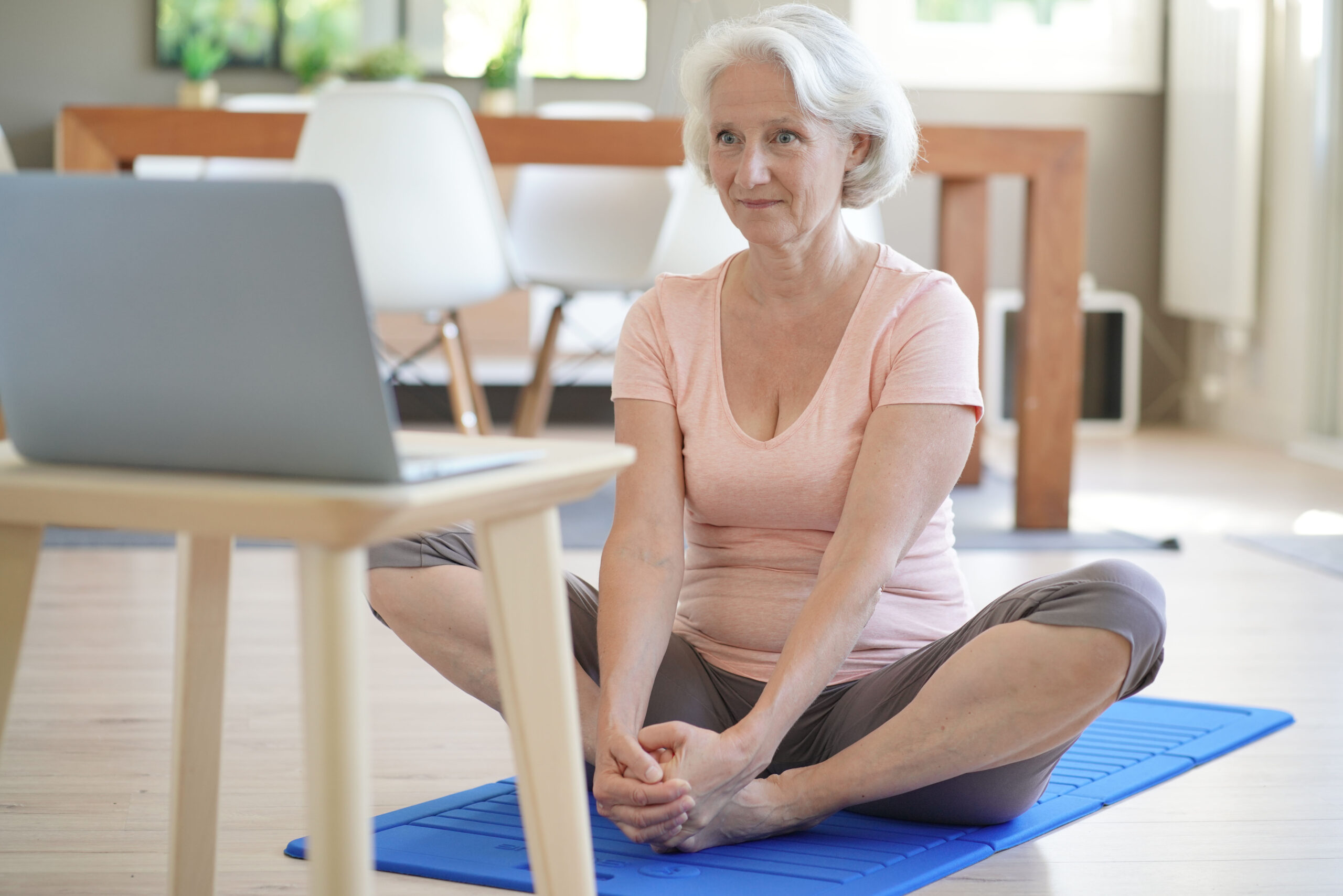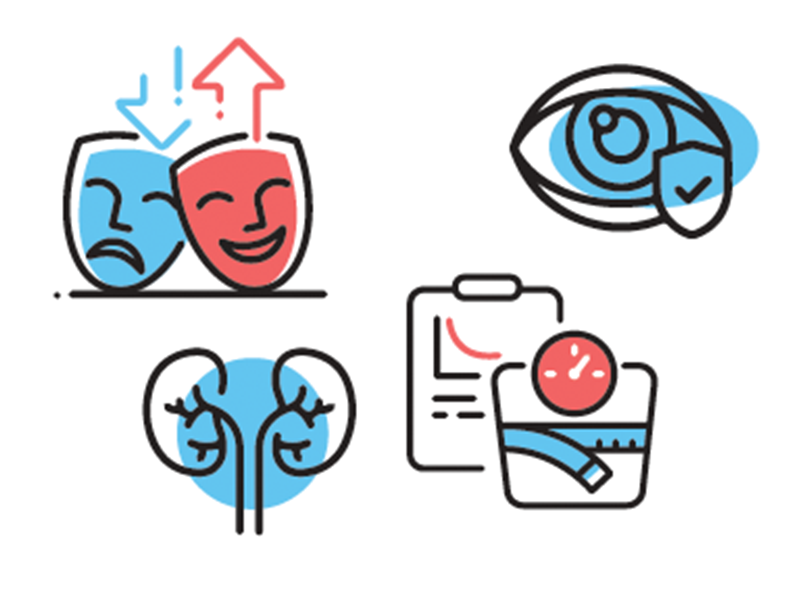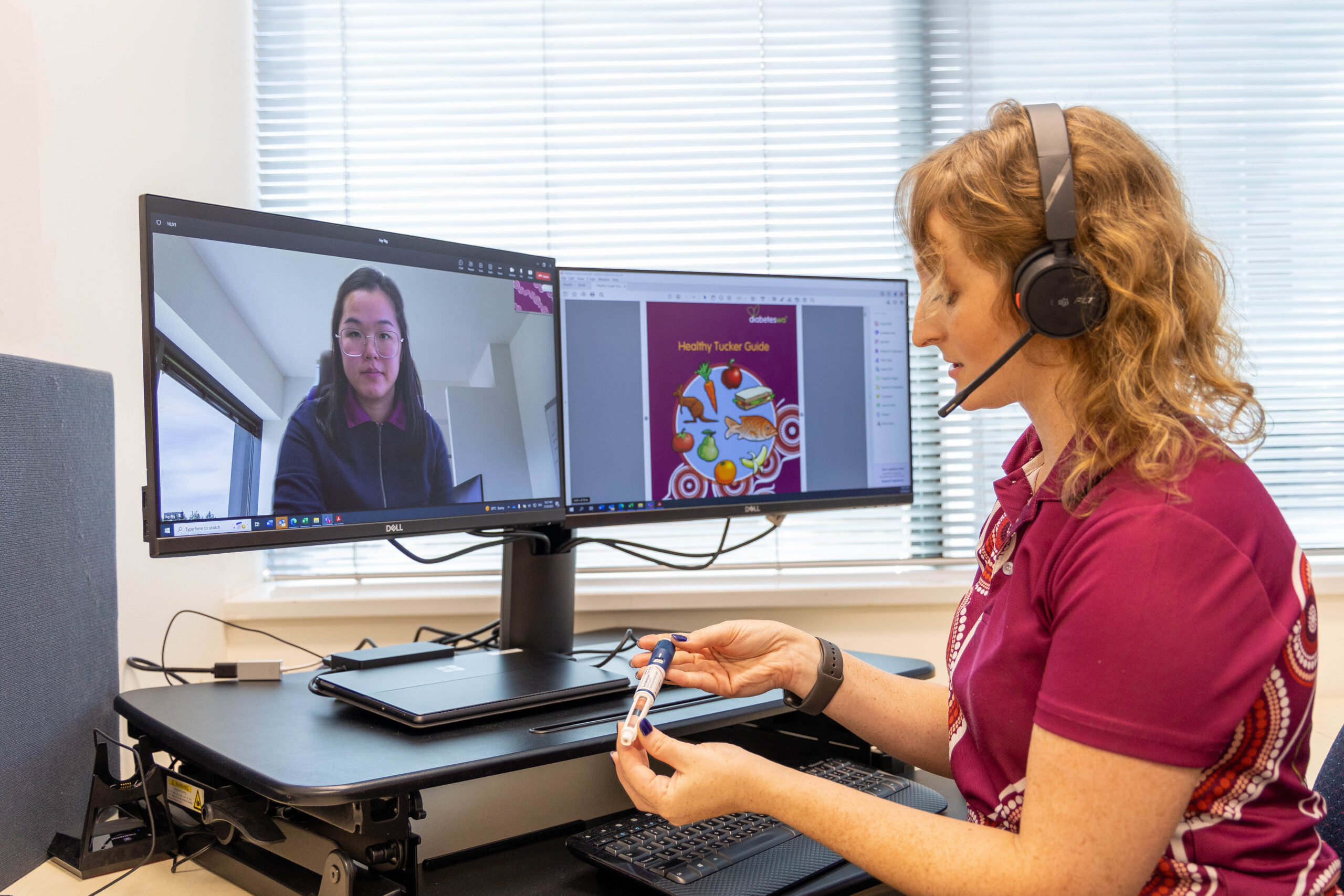Gym not an option? There are many other ways to get fit if you prefer to work out at home, writes exercise physiologist CARLY LUFF.
These days there is no shortage of online workouts to try – the challenge is finding the ones that work for you.
Combining a home workout with outdoor exercise can provide even greater benefits. Aim for at least 30 minutes of aerobic exercise, such as walking, swimming or cycling, on most days of the week. Adding in at least two sessions of strength training can also help to keep you strong and manage your diabetes.
Here are some free, high-quality online workouts for all ages, fitness levels and abilities that give you access to exercise physiologists, personal trainers, yoga teachers and more in the privacy of your own living room. All you need is an internet connection.
It’s OK to sit down and simply watch to begin with, so you can get a feel for what the workout will be like. If you would like more guidance, it might be worth talking to an accredited exercise physiologist or looking at studios near you that also offer online options.
Exercise Right
This comprehensive website has been developed by Australian exercise physiologists to help people find the right support and get more active.
Along with information about how an exercise physiologist can help you, the website features a variety of engaging home workout videos. All taught by accredited exercise physiologists, they range from falls prevention and desk workouts to a 25-minute full body circuit, so there is something for every age and fitness level.
Strength-based workouts
Linsday Bomgren is a certified personal trainer and her website, Nourish Move Love, has an impressive range of free workouts for women, including beginner, pregnancy and post-partum options, with a focus on strength training.
Yoga
While not quite the same as a studio, a yoga video can make a good substitute if it’s hard to leave the house, or you only have 20 minutes to spare. Many yoga instructors now offer classes online for free – just roll out your mat and prop up your phone.
Try Yoga with Adriene to see if you like it, and branch out from there.
Spin classes
If you have a spin bike at home, personal trainer Kayleigh Cohen’s free cycling classes will encourage you to push yourself within this online community. She also offers strength-training and cardio videos, as well as a post-workout all-body stretch.
Exercise for over-60s
The ElderfitTV channel on YouTube offers exercises designed specifically for older adults to improve strength, mobility, balance and confidence.
Virtual Y
Virtual Y is the online home of Victoria’s YMCA. Here you’ll find fitness, nutrition and wellbeing programs, aimed at young people looking to learn more about health and wellbeing, but suitable for everyone.
LiveLighter
Along with its vast database of healthy recipes developed here in West Australia, LiveLighter offers lots of options for getting active with videos, workout plans and more.
Why strength training is beneficial for people living with diabetes
Diabetes and heart disease are closely connected. Long-term high blood glucose levels can damage blood vessels and cause arteries to stiffen, increasing the risk of heart attacks. In type 2 diabetes, insulin resistance leads to increased fat in the blood, lowers good cholesterol and raises blood pressure, all of which are harmful to the heart. It’s important that people living with diabetes manage their blood glucose, blood pressure and cholesterol to reduce the risk of heart disease.
While aerobic exercises are great for heart health, don’t overlook strength or resistance training to improve circulation and boost your overall wellbeing.
Resistance training involves using weights, resistance bands or your own body weight to build muscle and strength. If you’re new to resistance training, it’s easy to start with basic bodyweight exercises at home. Simple moves like sit to stands, step-ups and wall push-ups require no equipment and can be done anywhere.
Try to perform 8 to 12 repetitions per exercise and complete 1 to 3 sets for each movement. Allow 1 to 3 minutes of rest between each set to optimise recovery. As your strength builds over time, gradually increase the resistance to continue challenging your body.
Take at least one rest day between workouts targeting the same muscle group to give your muscles time to recover.
When starting a new program, listen to your body and start gradually. If you are new to strength training and are experiencing a heart condition or something else you are concerned about it, it may be worth talking to your GP. If you need guidance, an accredited exercise physiologist can help you to ensure your program is suitable for you.
Dr Melissa Sbaraglia, accredited exercise physiologist
Type 1 diabetes and exercise
For people living with type 1 diabetes, the timing, type, duration and intensity of exercise can all impact blood glucose levels. Here are some things to consider when exercising:
- Check your BGLs before, during and after physical activity.
- In general, for activities over 30 minutes you may need to adjust your carbohydrate intake or insulin doses to prevent hypoglycaemia. Talk to your health care team for support.
- Stay hydrated before, during and after exercise.
- Avoiding injecting insulin into exercising limbs.
- Avoid exercising if ketones are present in your blood or urine, if you are unwell, or if your BGLs are too low.




